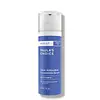What's inside
What's inside
 Key Ingredients
Key Ingredients

 Benefits
Benefits

 Concerns
Concerns

No concerns
 Ingredients Side-by-side
Ingredients Side-by-side

Cyclopentasiloxane
EmollientDimethicone
EmollientTetrahexyldecyl Ascorbate
AntioxidantPalmitoyl Tripeptide-5
Skin ConditioningCeramide NP
Skin ConditioningTocotrienols
Skin ConditioningTocopherol
AntioxidantUbiquinone
AntioxidantThioctic Acid
AntioxidantTocopheryl Acetate
AntioxidantMagnesium Ascorbyl Phosphate
AntioxidantFerulic Acid
AntimicrobialBeta-Glucan
Skin ConditioningSuperoxide Dismutase
AntioxidantEpigallocatechin Gallate
AntioxidantErgothioneine
AntioxidantGlutathione
Xanthophylls
Skin ConditioningGlycine Soja Seed Extract
Skin ConditioningGlycerin
HumectantArctostaphylos Uva Ursi Leaf Extract
Skin ConditioningLupinus Albus Seed Extract
Skin ConditioningCurcuma Longa Root
Skin ConditioningElaeis Guineensis Oil
EmollientPhenoxyethanol
PreservativeCyclopentasiloxane, Dimethicone, Tetrahexyldecyl Ascorbate, Palmitoyl Tripeptide-5, Ceramide NP, Tocotrienols, Tocopherol, Ubiquinone, Thioctic Acid, Tocopheryl Acetate, Magnesium Ascorbyl Phosphate, Ferulic Acid, Beta-Glucan, Superoxide Dismutase, Epigallocatechin Gallate, Ergothioneine, Glutathione, Xanthophylls, Glycine Soja Seed Extract, Glycerin, Arctostaphylos Uva Ursi Leaf Extract, Lupinus Albus Seed Extract, Curcuma Longa Root, Elaeis Guineensis Oil, Phenoxyethanol
Aloe Barbadensis Leaf Juice
Skin ConditioningLauric Acid
CleansingCetearyl Alcohol
EmollientVaccinium Macrocarpon Fruit Juice
Skin ConditioningGlycerin
HumectantResveratrol
AntioxidantUbiquinone
AntioxidantMagnesium Ascorbyl Phosphate
AntioxidantHyaluronic Acid
HumectantSqualane
EmollientMyrtus Communis Extract
AstringentLycium Barbarum Amino Acids
Skin ConditioningHelianthus Annuus Flower
Skin ConditioningTocopherol
AntioxidantGlyceryl Laurate
EmollientVitis Vinifera Seed
Skin ConditioningBorago Officinalis Ethyl Ester
Skin ConditioningRosa Canina Callus Lysate
AntioxidantLinum Usitatissimum Seed Flour
AbrasiveHippophae Rhamnoides Oil
EmollientTheobroma Cacao Seed Butter
EmollientAspalathus Linearis Leaf
Skin ConditioningHibiscus Rosa-Sinensis Callus Extract
Skin ConditioningLaminaria Digitata Extract
Skin ProtectingAllantoin
Skin ConditioningCetyl Alcohol
EmollientGlyceryl Stearate
EmollientCyamopsis Tetragonoloba Gum
Emulsion StabilisingPhenethyl Alcohol
MaskingEthylhexylglycerin
Skin ConditioningCitrus Aurantium Dulcis Oil
MaskingAloe Barbadensis Leaf Juice, Lauric Acid, Cetearyl Alcohol, Vaccinium Macrocarpon Fruit Juice, Glycerin, Resveratrol, Ubiquinone, Magnesium Ascorbyl Phosphate, Hyaluronic Acid, Squalane, Myrtus Communis Extract, Lycium Barbarum Amino Acids, Helianthus Annuus Flower, Tocopherol, Glyceryl Laurate, Vitis Vinifera Seed, Borago Officinalis Ethyl Ester, Rosa Canina Callus Lysate, Linum Usitatissimum Seed Flour, Hippophae Rhamnoides Oil, Theobroma Cacao Seed Butter, Aspalathus Linearis Leaf, Hibiscus Rosa-Sinensis Callus Extract, Laminaria Digitata Extract, Allantoin, Cetyl Alcohol, Glyceryl Stearate, Cyamopsis Tetragonoloba Gum, Phenethyl Alcohol, Ethylhexylglycerin, Citrus Aurantium Dulcis Oil
 Reviews
Reviews

Ingredients Explained
These ingredients are found in both products.
Ingredients higher up in an ingredient list are typically present in a larger amount.
Glycerin is already naturally found in your skin. It helps moisturize and protect your skin.
A study from 2016 found glycerin to be more effective as a humectant than AHAs and hyaluronic acid.
As a humectant, it helps the skin stay hydrated by pulling moisture to your skin. The low molecular weight of glycerin allows it to pull moisture into the deeper layers of your skin.
Hydrated skin improves your skin barrier; Your skin barrier helps protect against irritants and bacteria.
Glycerin has also been found to have antimicrobial and antiviral properties. Due to these properties, glycerin is often used in wound and burn treatments.
In cosmetics, glycerin is usually derived from plants such as soybean or palm. However, it can also be sourced from animals, such as tallow or animal fat.
This ingredient is organic, colorless, odorless, and non-toxic.
Glycerin is the name for this ingredient in American English. British English uses Glycerol/Glycerine.
Learn more about GlycerinMagnesium Ascorbyl Phosphate (MAP) is a form of Vitamin C and is an antioxidant. It can help to reduce redness, improve skin texture, reduce the effects of aging, reduce the visibility of dark spots, and brighten skin.
MAP is created by combining ascorbic acid with magnesium salt. While MAP more gentle on the skin than ascorbic acid, it is thought to be less easily-absorbed into the skin.
Due to MAP's stability up to a pH level of 7, it is more stable to air and sunlight exposure than ascorbic acid. The best pH range for MAP is between 5 and 6.
Like other forms of Vitamin C, MAP has been shown to help reduce hyperpigmentation and simulate collagen production.
As an antioxidant, it helps protect your skin against the signs of aging.
Learn more about Magnesium Ascorbyl PhosphateTocopherol (also known as Vitamin E) is a common antioxidant used to help protect the skin from free-radicals and strengthen the skin barrier. It's also fat soluble - this means our skin is great at absorbing it.
Vitamin E also helps keep your natural skin lipids healthy. Your lipid skin barrier naturally consists of lipids, ceramides, and fatty acids. Vitamin E offers extra protection for your skin’s lipid barrier, keeping your skin healthy and nourished.
Another benefit is a bit of UV protection. Vitamin E helps reduce the damage caused by UVB rays. (It should not replace your sunscreen). Combining it with Vitamin C can decrease sunburned cells and hyperpigmentation after UV exposure.
You might have noticed Vitamin E + C often paired together. This is because it is great at stabilizing Vitamin C. Using the two together helps increase the effectiveness of both ingredients.
There are often claims that Vitamin E can reduce/prevent scarring, but these claims haven't been confirmed by scientific research.
Learn more about TocopherolUbiquinone (Coenzyme Q10) is a molecule already found in our bodies. It is a potent antioxidant and skin-soothing ingredient.
Aging and environmental exposure diminishes our skin's natural ubiquinone levels. This is much like our natural collagen and elastin.
The good news is: studies show applying this ingredient topically replenishes ubiquinone levels in our skin. This also comes with a ton of skin benefits. These benefits include:
Ubiquinone is considered a large molecule and cannot be absorbed into the lower layers of skin. This is why it is believed to be such an effective antioxidant: it protects our skin in the upper layers and prevents damage in the deeper layers.
When used in sunscreen, ubiquinone is shown to increase ingredient stability, increase SPF factor, and add to infrared protection.
Fun fact: ubiquinone is fat-soluble.
Learn more about Ubiquinone